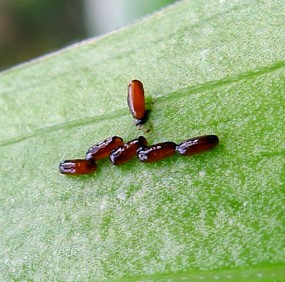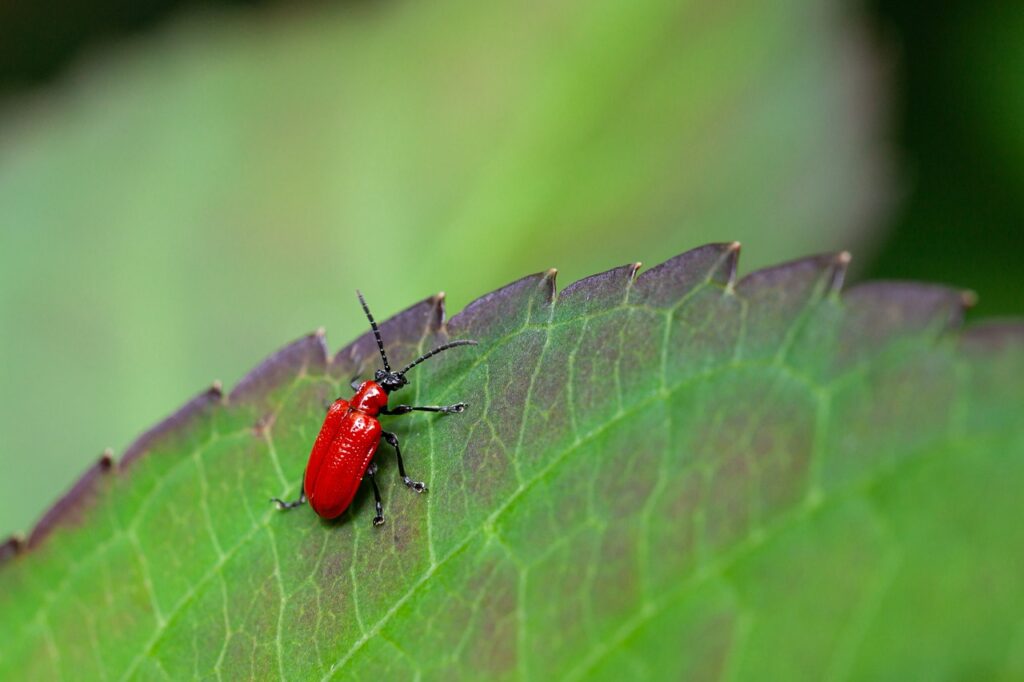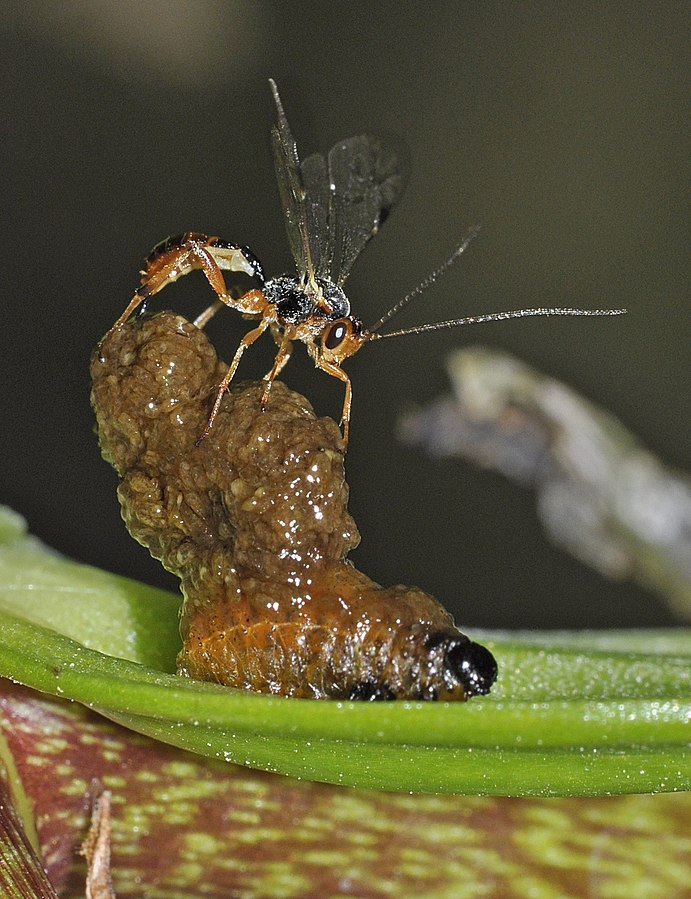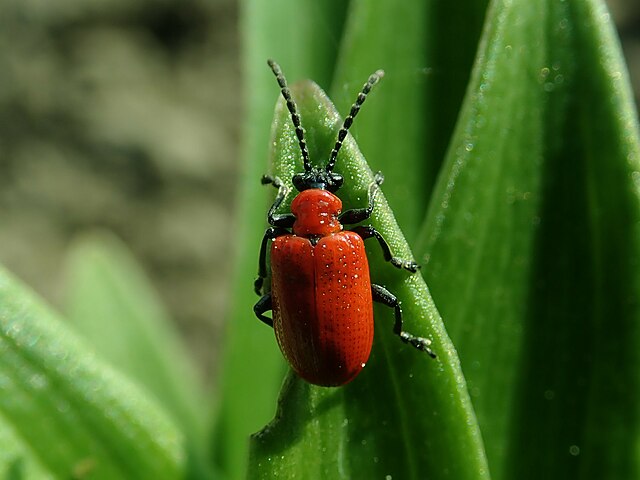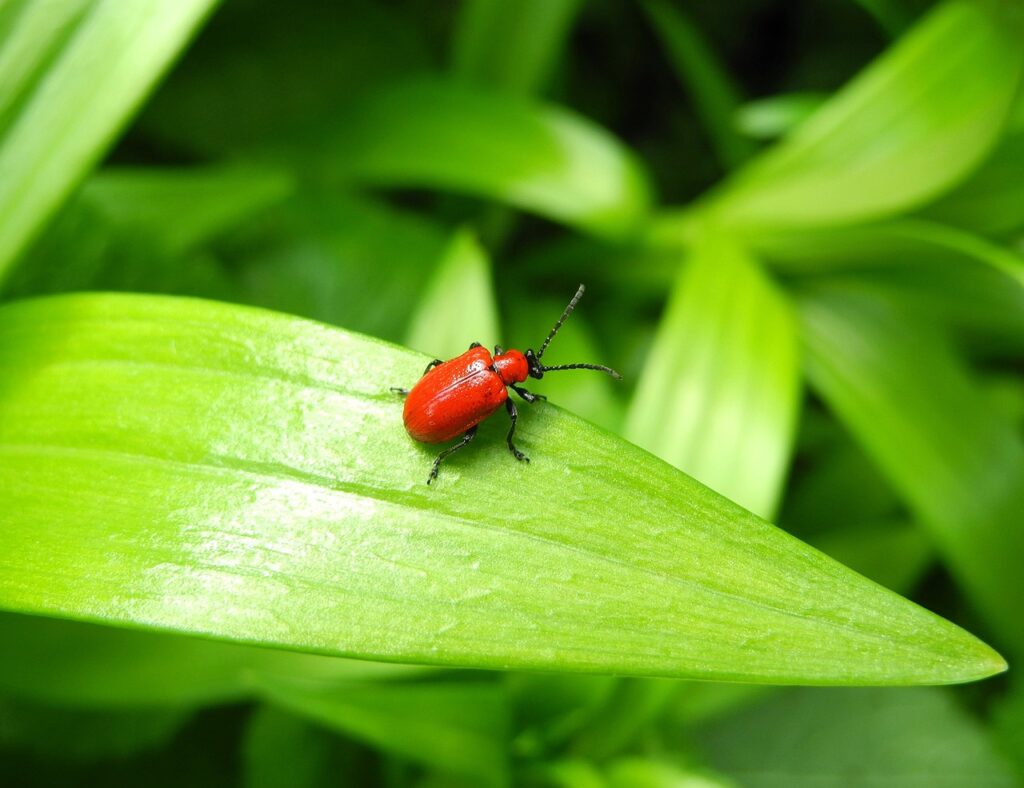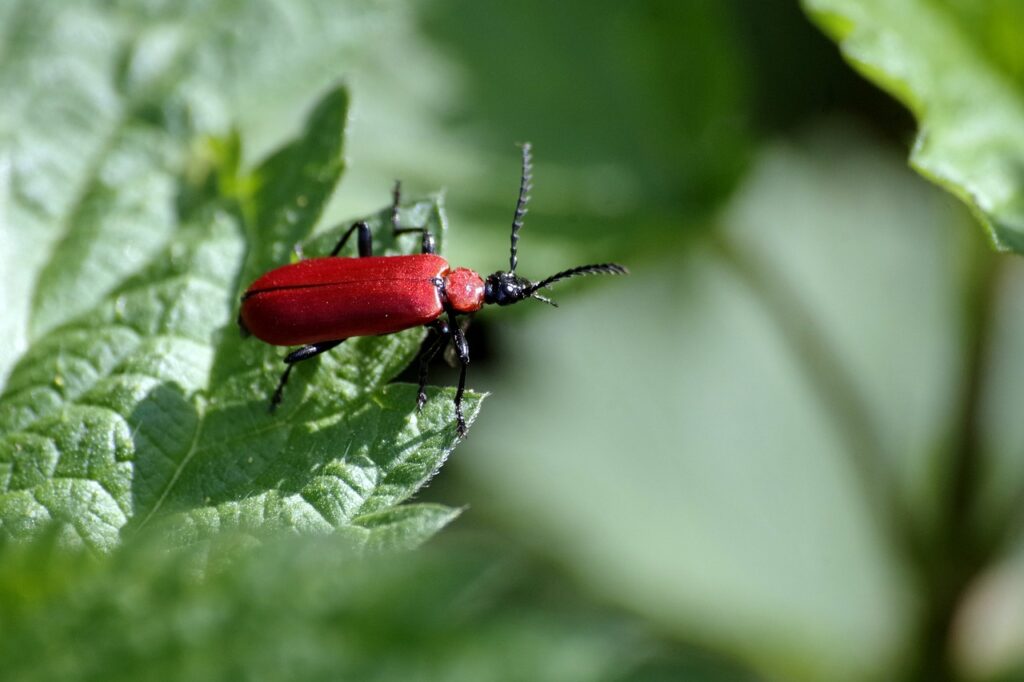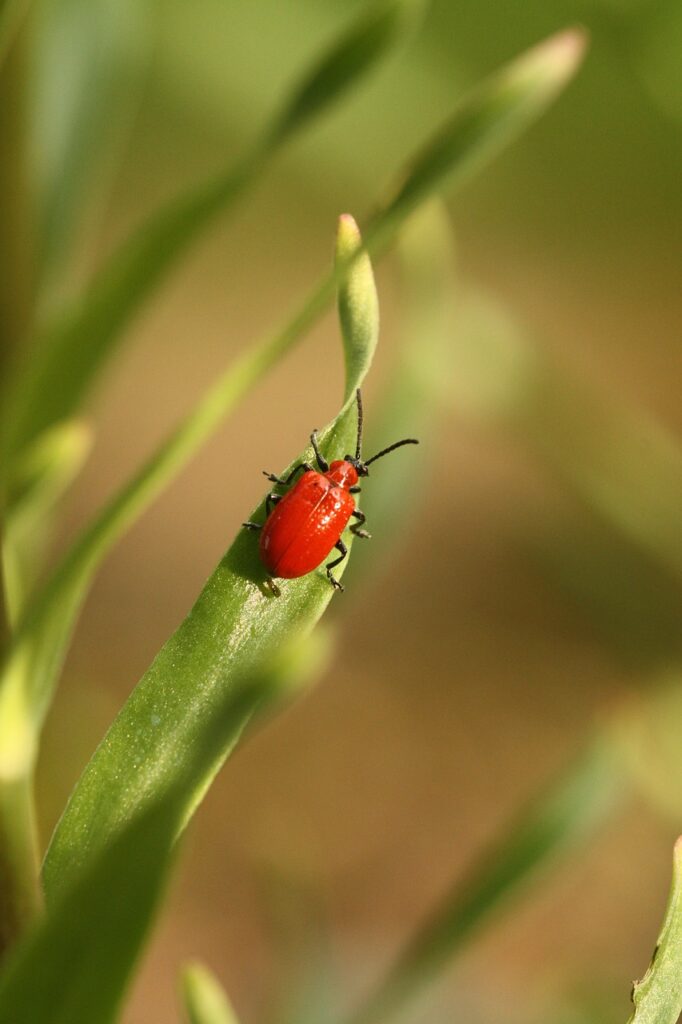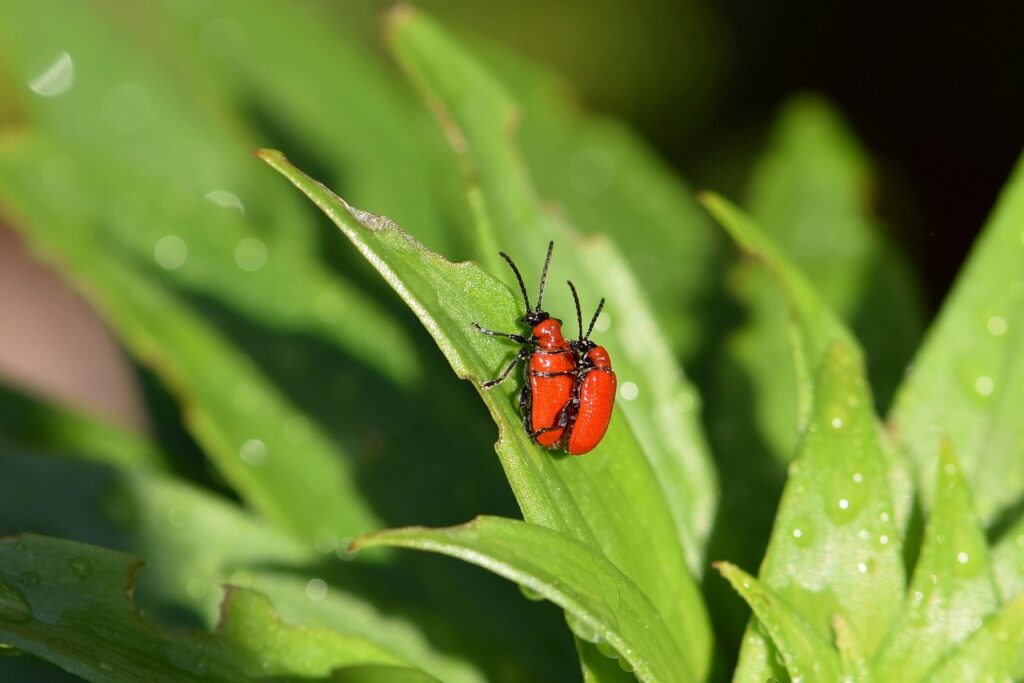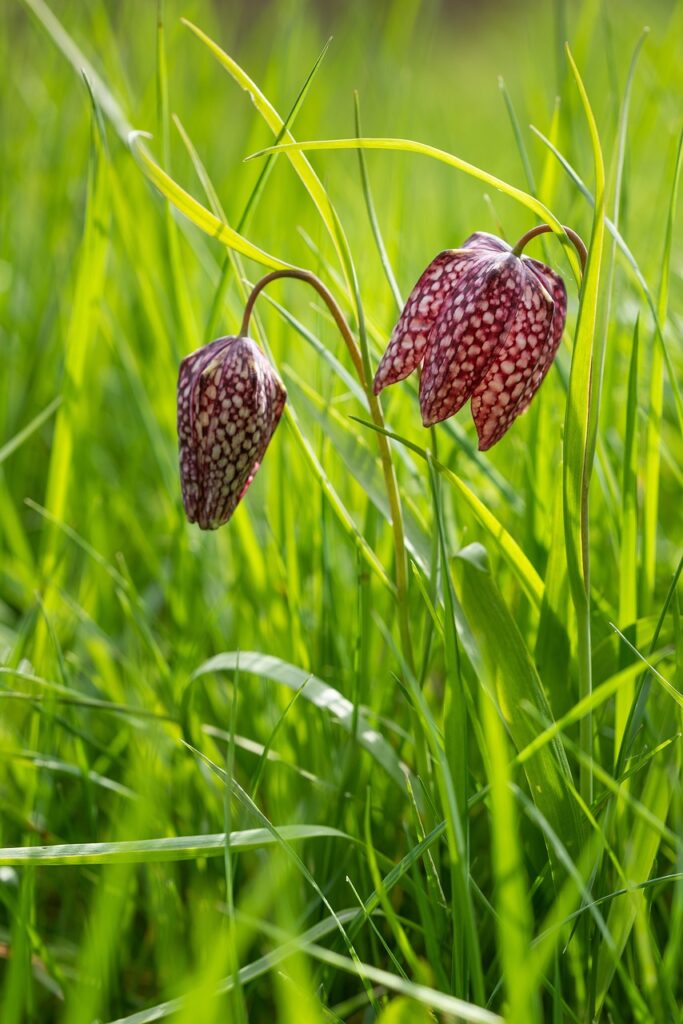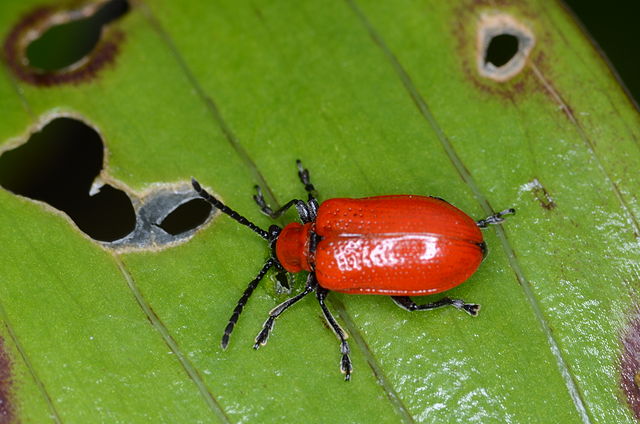10 Neat Things About Lily Leaf Beetle
1. What is it?
What carries its poop around on its back? And why?! The lily leaf beetle (Liliocerus lillii) larvae use their own excrement in a “fecal shield” to ward off predators. Scientists aren’t 100-percent sure why, but it may act as camouflage to make them blend into their surroundings, or as a physical barrier to make them distasteful. A number of creatures don’t mind poop; why are they turned off by this? Because these feces are believed to contain remnants of the toxic compounds present in their food plants (lilies), which may contribute to their effectiveness as a deterrent against predators.
3. Why are they back?
Just when gardeners thought they could grow lilies again, the beetle is back. Why? Because the parasitic wasps were successful, which meant that they killed most of the beetles, which meant the wasps had nowhere to lay their eggs, which meant fewer of these parasitic wasps. With fewer parasitic wasps, more lily leaf beetle survived to lay more eggs…. We’re at a point in the cycle when there are more beetles than wasps. It will turn around.
4. What they look like.
The adults are little guys, around ¼ inch long, but they’re easy to spot because they are red. Their legs and undersides are black, which makes them difficult to see when they drop off a plant and into the soil. The larvae get to be about the same size, but they start out smaller and yellow, turning to a reddish shade as they get older.
5. What they eat?
Both adults and larvae feed exclusively on true lilies and fritillaries (Lilium and Fritillaria). Here is where your Latin comes in handy; they don’t feed on daylilies, lily of the valley, toad lilies, water lilies, calla lilies or cana lilies, which are not Lilium or Fritillaria.
6. What’s that sound?
Lily leaf beetles are known to squeak when disturbed. This is a sound they make by rubbing their wing covers against their bellies (stridulation). They do it because the sudden sound might scare predators off. It doesn’t really work more than once for most predators, though.
7. What is the life cycle?
They live for about a year. Adults emerge from the leaf litter or soil in the spring. They feed, mate, and the female lays bright orange eggs on the undersides of leaves. In late spring or summer, the larvae hatch and start devouring lilies and fritillaries. The larvae drop to the ground and pupate for two to three weeks in the summer, then emerge and start eating more. In fall, they go underground and spend winter safely tucked away.
9. What do I do?
Manual removal is popular among gardeners… well, maybe not popular, but it what a lot of gardeners do. One gardener seems to have the right approach: take a bucket of soapy water out to the garden. Put on cotton gardening gloves, soaked in the soapy water. Lightly grasp the lily (or fritillary) near the base and run your hands up the plant and then down, making sure both sides of the leaves have made contact with your gloves. Rinse your gloves in the soapy water again, then take them off and wring them out on the soil around the plant to get any adults that have dropped off. Put the gloves back on and go to the next lily or fritillary.



